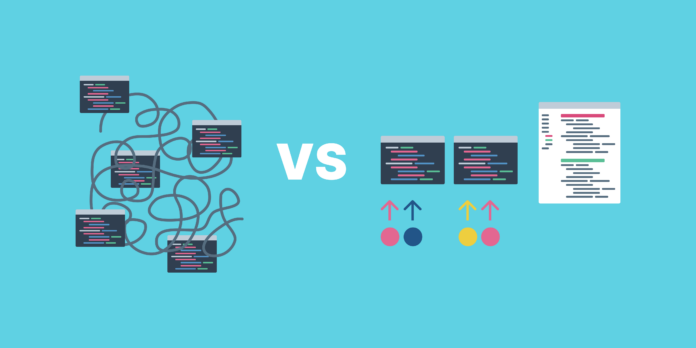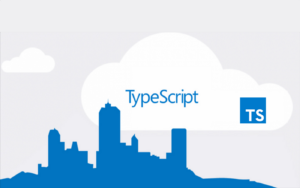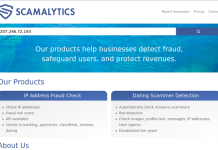
Developer experience tools will be discussed in this article. In the course of the product lifecycle, software developers go to great efforts to take user experience (UX) into account. But the developer experience (DX) is now also being taken into account in software creation. Developers operate in a world that is getting more and more complicated thanks to pipelines of open source code, client frameworks, SDKs, and cloud infrastructure.
11 Developer Experience Tools Complete Guide
In this article, you can know about 11 Developer Experience Tools Complete Guide here are the details below;
Because it’s not always simple, developer experience efforts are concentrated on fostering a better and more streamlined experience for coders.
Continue reading to find out more about DX, its significance, and 11 techniques and tools for enhancing developer experience.
What is developer experience (DX)
User experience and developer experience are directly comparable.
The goal of developer experience is to enhance the developer’s interaction with a product by focusing on them as the consumer and customer of that product.
Even though it’s frequently true that developers can “figure it out,” consider the amount of time they could save if we created processes that were efficient from the beginning. It’s easy to overlook developer experience.
One of the goals that developer experience teams established was to accomplish that.
The goal of a great developer experience is to design front- and back-end development processes that are quick and simple.
In addition to being practical from a financial perspective (saving time equals saving money), it’s also important to keep your developers satisfied.
In the end, it’s just an exercise in sensitivity.
The key to enhancing DX is to ask the correct questions.
Where are the obstacles on the developer journey?
Looking at the developer journey map—the user’s objectives, emotions, path, touchpoints, and pains—helps to identify areas for improvement, much like how UX approaches the journey of end users.
DX consequently enhances the programming platform’s usability.
Why having a developer experience strategy is important
Businesses are aware of the value of engaging in good UX, but good DX is just as crucial to the health of their company and the success of their products.
A bad developer experience can increase time to market and foster a toxic work environment.
Many tools that support effective DX, such as cloud implementation, APIs, and low-code solutions, support flexibility and provide developers with a low-risk incentive to try new things.
Additionally, because the majority of developer tools are SaaS (Software as a Service), they assist in lowering the total cost of development by replacing high upfront software costs with a low monthly fee.
Investing in quality DX can also be very effective at luring and keeping top devs.
It takes more than just continuous delivery or closing the gap between development and operations in DevOps teams to achieve effective DX.
It entails probing questions about the developer’s project-related experience.
You can use the following queries as indicators of a good developer experience:
What brain work is required to complete an action?
As the day goes on, cognitive load increases, and making many choices increases decision fatigue.
How many different contexts does a developer move between each day?
This could involve switching between platforms or different job categories.
The productivity is reduced by frequent context changes.
How many platforms are being used by the developers?
Besides GUIs, coders also use CLI and API.
These systems are they easy to use?
Can you limit the number of platforms your programmers use?
How well does the developer communicate and engage with those with whom they interact?
Does it diminish the developer’s efforts?
What good DX Looks like
Development teams with strong DX have a shared vision, a stronger feeling of accountability, and a welcoming environment.
These groups also accept loss without consequence.
Teams with bad DX, on the other hand, may engage in blame-games, perpetual deadline pressure, failure-related consequences, and a diluted sense of shared accountability.
While company culture and team dynamics are at the heart of most of these positive effects of a good DX, specific changes to the development process also have a significant positive effect on the developer experience.
This can involve automated interfaces, readily available infrastructure, a smooth onboarding procedure, and a clear manual on how to use the API, tools, and platforms.
To enhance developer experience in your company, use these 11 strategies and tools.
You can enhance the developer experience in your company by using these 11 tools and tactics.
These developer experience tools were chosen because they will have the biggest influence on your developer experience strategy and are relatively simple and affordable to apply.
1. Start with company culture

A successful developer experience is largely dependent on the company culture.
Developers are empowered to innovate and take chances when working in an environment that is supportive and upbeat, and it also keeps them motivated.
Engineering teams should concentrate on creating a collaborative environment that values everyone’s opinion in order to support a positive company culture.
In order to promote creativity and risk-taking, there shouldn’t be much retaliation for mistakes.
By demonstrating to developers that management is interested in enhancing their everyday experiences, the other 10 developer experience tools and strategies can also help to foster a positive workplace culture.
2. Developer onboarding

The first time the value of DX is evident is during the hiring of developers.
It can be difficult and ineffective to onboard developers in the midst of a project without any assistance or direction.
Maintaining momentum from the time of onboarding until the project’s initial launch is similarly crucial.
Give developers a well-organized plan so they will understand precisely what is required of them at each stage.
It can be helpful to give small, specific tasks and then gradually add complexity, especially when working with new developers.
By doing so, they can lay a solid base without being thrown into the deep end.
A smooth onboarding process can help build momentum for larger initiatives.
3. Understand the developer journey

The developer journey should be understood just as much as the user experience.
It can aid in developing empathy for your developers and a better grasp of what they require in order to perform their duties to the highest standard.
Is the path siloed in any way?
Each stage of the procedure is communication effective?
You can find out this information by speaking with your developers and looking at the way they typically operate.
4. Time management and productivity tools

In order to make software delivery deadlines without exhausting your developer team, effective time management is crucial.
Your developers can concentrate on their daily duties without having to make frequent context switches to attend meetings when you schedule uninterrupted Focus Time with Clockwise.
Asana is a fantastic tool for the DevOps team to use to keep track of who is in charge of what duties.
To instantly add tasks to your calendar without switching between platforms, Clockwise integrates with Asana.
By assisting developers in concentrating on the development process, you can enhance your DX by using time management and efficiency tools.
5. Effective communication

Conflict between team members and administration frequently results from inadequate communication.
Concentrating on effective communication techniques can enhance your developer experience by fostering a more positive workplace culture and by enabling you to convey potential issues and delays.
Clockwise automates meeting scheduling so that everyone can get together when it’s practical.
Slack is a fantastic resource for enabling asynchronous conversation.
The Clockwise integration for Slack sets Do Not Disturb time based on the schedules of your team.
6. Improve workflow and shorten feedback loops

Small batch production is a key component of agile and lean product development because it allows for a quick feedback cycle.
Developers can receive input and iterate rapidly with a short feedback loop.
Implementing continuous integration and delivery tools, such as Jenkins or go.cd, can greatly speed up the feedback loop and automate input.
Additionally, you can enhance the process by including a command to build the application and a link to your source code or codebase on GitHub.
Because small teams are in charge of highly testable services, creating a microservices design can also help to improve workflow.
7. Set up an IDE and Use Typescript

A developer’s work is greatly facilitated by setting up an IDE (Integrated Development Environment).
An IDE offers type safety tools that swiftly identify coding mistakes in addition to a template for arranging code.
It’s crucial to pick the appropriate computer languages when using an IDE like Visual Code Studio or WebStorm.
When using an Editor, TypeScript performs better than Javascript.
Many programmers use Java, but TypeScript provides capability that greatly reduces the laborious manual aspects of coding.
8. Use consistent formatting with a linter

Everyone will be on the same page thanks to consistent formatting, which also facilitates teamwork and code integration.
A linter, such as ESLint, automates the formatting of code and uses all specified styling rules.
To take it a step further, specify code styles and formats at the outset of the project and incorporate them into the onboarding procedure.
9. Use an API that put developer experience first

Application Programming Interfaces, or APIs, are the primary bases on which developers operate.
The use of an API designed with the developer experience in mind can result in happier workers and quicker turnaround times.
GraphQL by Shopify and AWS by Amazon are two instances of APIs that are renowned for offering an excellent developer experience.
10. Develop comprehensive SDKs

The ecosystem in which programming takes place is analogous to an SDK (Software Development Kit).
It includes all the tools your developers will need to complete the task.
Along with the frameworks required to create a programme, the SDK also has testing and debugging tools.
Because there is only one drawback to using an SDK—possible decreased security—Apple hardly ever makes SDKs available.
On the other hand, Microsoft and other platforms take a chance on the drawback to gain the advantages of SDKs.
The key to creating a successful SDK is instruction.
The best method for developers to learn how your platform operates and how to debug is through it.
SDKs are an excellent onboarding aid for your company, providing your developers with the tools they need to be successful.
11. SemVer: Semantic versioning
The SemVer system allows you to keep track of all the different versions of your merchandise.
It’s crucial to keep account of every iteration of the product so that developers can avoid mistakes made in earlier iterations and build on the most recent version.
This common method of versioning makes sure that all steps are properly indexed for versions and that everyone is aware of the system.
SemVer employs the three-digit sequence x.y.z, where X stands for main versions, Y for minor versions, and Z for patches.
Maintaining track of product versions and new features is made easier by semantic versioning for workers both inside and outside of your company.
Going forward
Your product and entire development team will benefit from investing in a sound developer experience plan.
Developer experience tools not only enhance the developer experience within your DevOps team, but they also facilitate development for devs outside of your company.
Supporting your developers entails not only giving them the most useful tools for the job, but also promoting a positive workplace culture and streamlining the onboarding procedure.
It’s simpler to keep top talent when developers are content in their positions.
Furthermore, effective DX increases developer productivity, enabling you to meet strict deadlines and create a higher-quality result.











